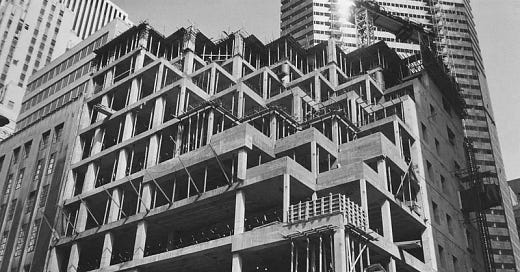Around the World
Donald Trump’s rise in the business world is closely connected to controversial ties with the Italian-American Mafia. During the 1970s and 1980s, the Mafia had strong control over the real estate markets in New York and Atlantic City. They infiltrated labor unions and controlled material supplies, like cement and concrete, to secure lucrative contracts for their affiliated companies. Developers often had no choice but to cooperate, as refusing could lead to shortages or inflated costs.
Trump’s major projects, such as the transformation of the Commodore Hotel into the Grand Hyatt and the construction of Trump Tower, succeeded in this environment. Cement for Trump Tower came from a company linked to the Genovese family, a connection made possible by Roy Cohn, Trump’s attorney, who also represented key Mafia figures like Tony Salerno and Paul Castellano. Thanks to Cohn’s legal expertise and Trump’s ability to manage these relationships, his developments progressed smoothly, boosting his reputation as a bold and pragmatic businessman.
The Mafia’s grip on labor unions was another critical factor in their power over the construction industry. Through control of unions such as the Cement and Concrete Workers Union, crime families dictated the pace and costs of projects. Developers who defied these unions faced strikes, delays, or even sabotage, leaving compliance as the only practical option.
Roy Cohn’s influence helped Trump navigate these challenges, allowing him to avoid the disruptions that often hindered other developers. By agreeing to work with Mafia-controlled unions and contractors, Trump gained an advantage in competitive markets. This cooperation exposed a deeper issue within the industry: the Mafia’s ability to use its control over unions and materials as leverage, creating a system that was difficult for developers to avoid.
Trump’s connections extended beyond logistical partnerships to a broader network of contentious relationships. For example, Bob Libutti, a high-stakes gambler with links to John Gotti’s Gambino family, was a frequent guest at Trump’s casinos. Despite Trump’s public denials, Libutti’s lawyer confirmed their association. Trump also relied on services from individuals with criminal records, such as helicopter operators later implicated in drug trafficking.
Partnerships with figures like Felix Sater, who had ties to Russian organized crime, and land deals with intermediaries connected to Nicky Scarfo, the boss of Philadelphia’s crime family, further highlighted the depth of these associations. While these relationships often gave Trump an edge over competitors, they also demonstrated the extent of organized crime’s influence on the business environment at the time.
Trump’s financial success, estimated at $3.9 billion, cannot be separated from these controversial alliances. His ability to secure funding, avoid labor disputes, and complete ambitious projects showcased his strategic skill, but it also depended on the Mafia’s influence in the industries he worked in.
In Atlantic City, a city deeply influenced by organized crime, Trump’s casino ventures reflected the challenges of operating in such an environment. From acquiring land tied to mob bosses to working with figures later implicated in drug-related crimes, Trump’s casinos faced controversies that underscored the difficulty of staying clear of criminal connections in Atlantic City’s development boom. Despite regulations meant to limit Mafia involvement, developers like Trump often found themselves entangled with questionable individuals, reinforcing his reputation as a shrewd but polarizing businessman.
The story of Donald Trump’s rise reveals a broader picture of systemic corruption in American industries during the late 20th century. Trump’s ability to navigate relationships with organized crime figures shows a pragmatic approach to success, one focused on results rather than reputational risks. Supporters might see these connections as proof of his resourcefulness, while critics argue they reflect ethical compromises.
As history continues to examine Trump’s legacy, these interactions remain an essential part of understanding his path to prominence. This narrative not only sheds light on Trump’s character but also highlights the significant role of organized crime in shaping America’s economic and political landscape during that era.





